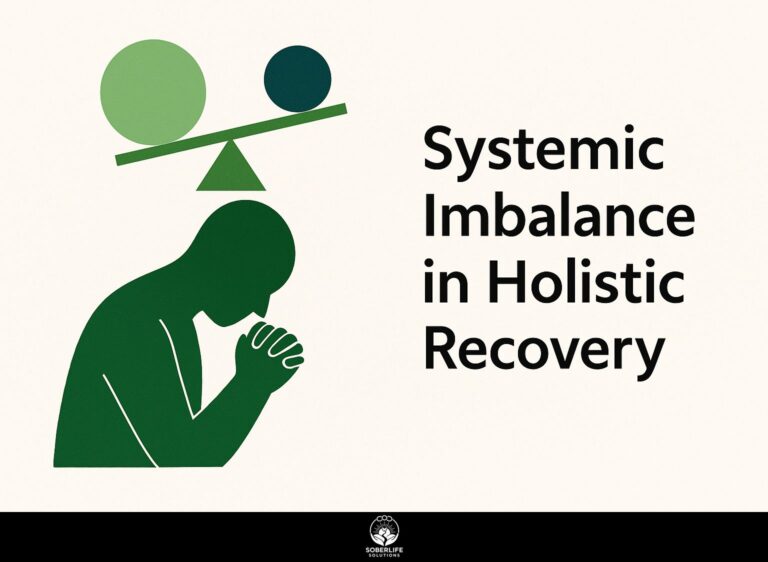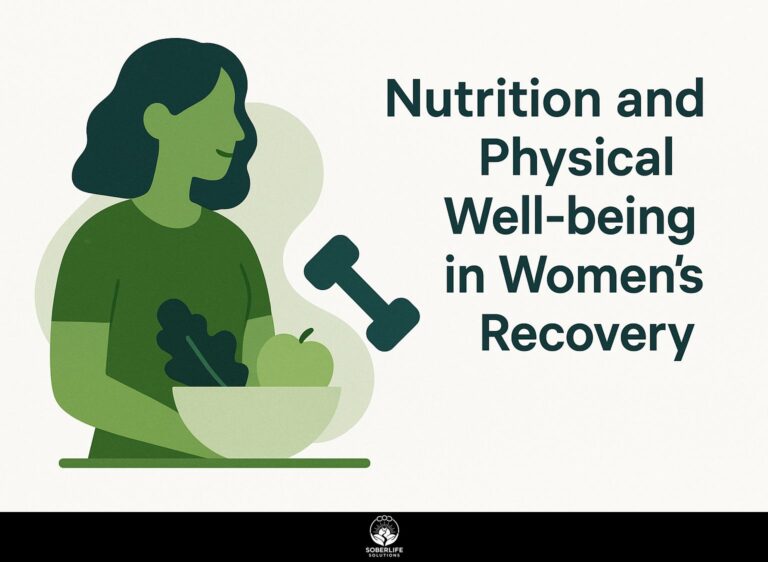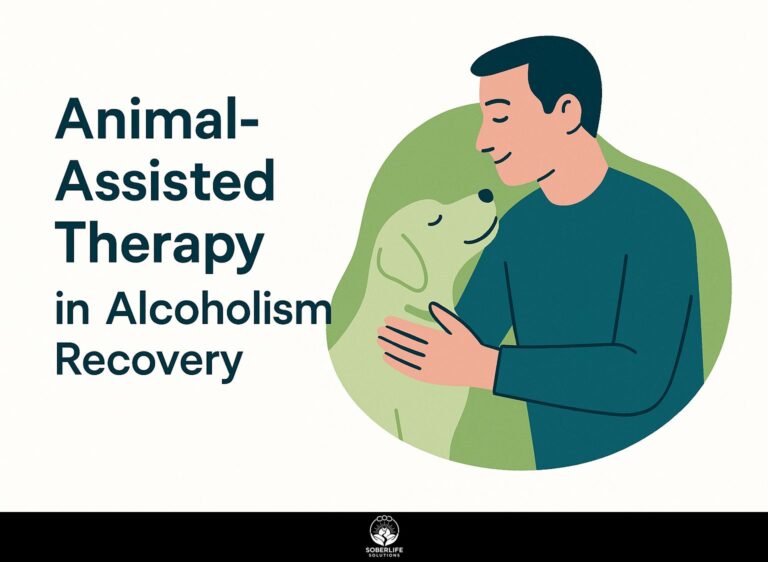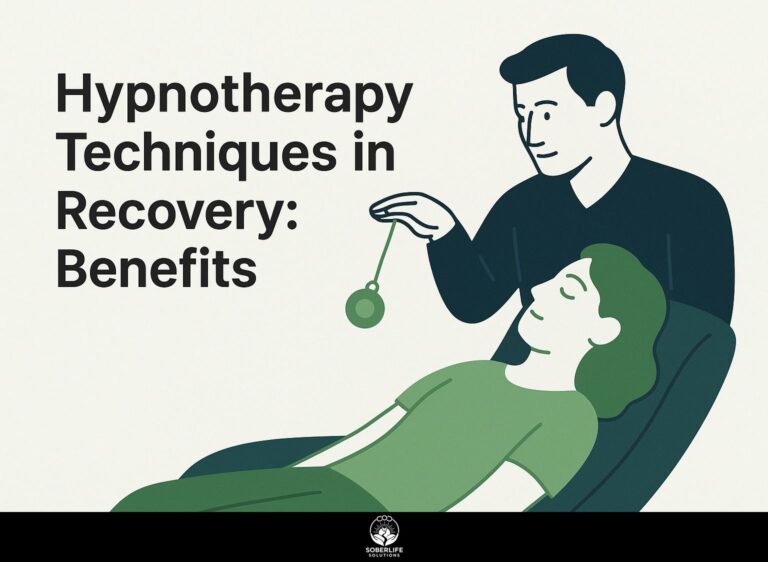Transpersonal Therapy in Recovery: Spiritual Role
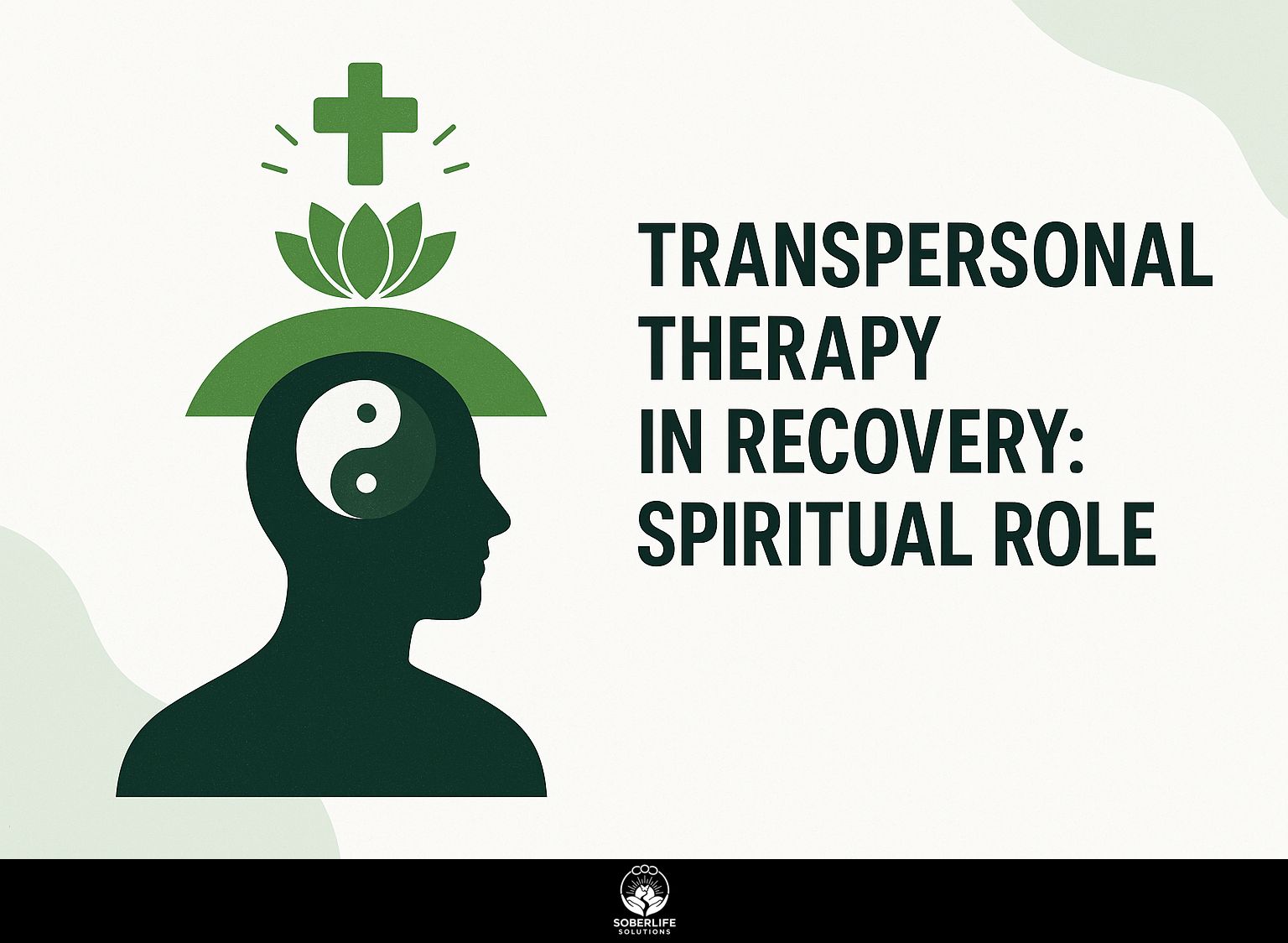
Transpersonal therapy offers a unique approach to recovery by bridging the gap between psychology and spirituality. Rooted in the principles of transpersonal psychology, this therapeutic modality emphasizes self-actualization and higher consciousness, drawing inspiration from thinkers like Abraham Maslow. When people include spiritual activities in their personal development, they can start a process that strengthens their emotional strength and self-awareness. Learn how this complete approach can change your recovery experience and support long-term improvement.
Key Takeaways:
Definition and Overview
Transpersonal psychology, according to Ken Wilber, looks at the spiritual elements of human experience, going beyond the usual limits of psychological research.
This method combines spiritual beliefs with psychological ideas, focusing on greater awareness and overall healing.
Key ideas include self-transcendence, where people look for a purpose bigger than themselves, and the connection between all living things.
Techniques like meditation, mindfulness, and breathwork are often used to encourage this experience.
Wilber’s integral theory is a significant concept that emphasizes considering both individual and collective perspectives, as well as internal and external elements, to understand how people progress and evolve. For expanded context, an article on Wikipedia explores the comprehensive nature of his theory and its applications.
This view encourages therapists to use a wide-ranging method that includes spiritual aspects.
Historical Context
The roots of transpersonal therapy can be traced back to the works of Abraham Maslow and Stanislav Grof, who emphasized the importance of transcendent experiences in psychological health.
Maslow introduced the concept of self-actualization, suggesting that individuals can achieve their fullest potential through peak experiences. This created a foundation for learning about psychological growth that goes beyond individual concerns.
Grof further expanded this idea with his research on altered states of consciousness, particularly through breathwork and psychedelics. His work in the 1970s demonstrated how these experiences could help people understand themselves better.
Their work has shaped current therapy methods that use mindfulness, spirituality, and whole-person approaches, deepening knowledge about the human mind.
The Role of Spirituality in Recovery
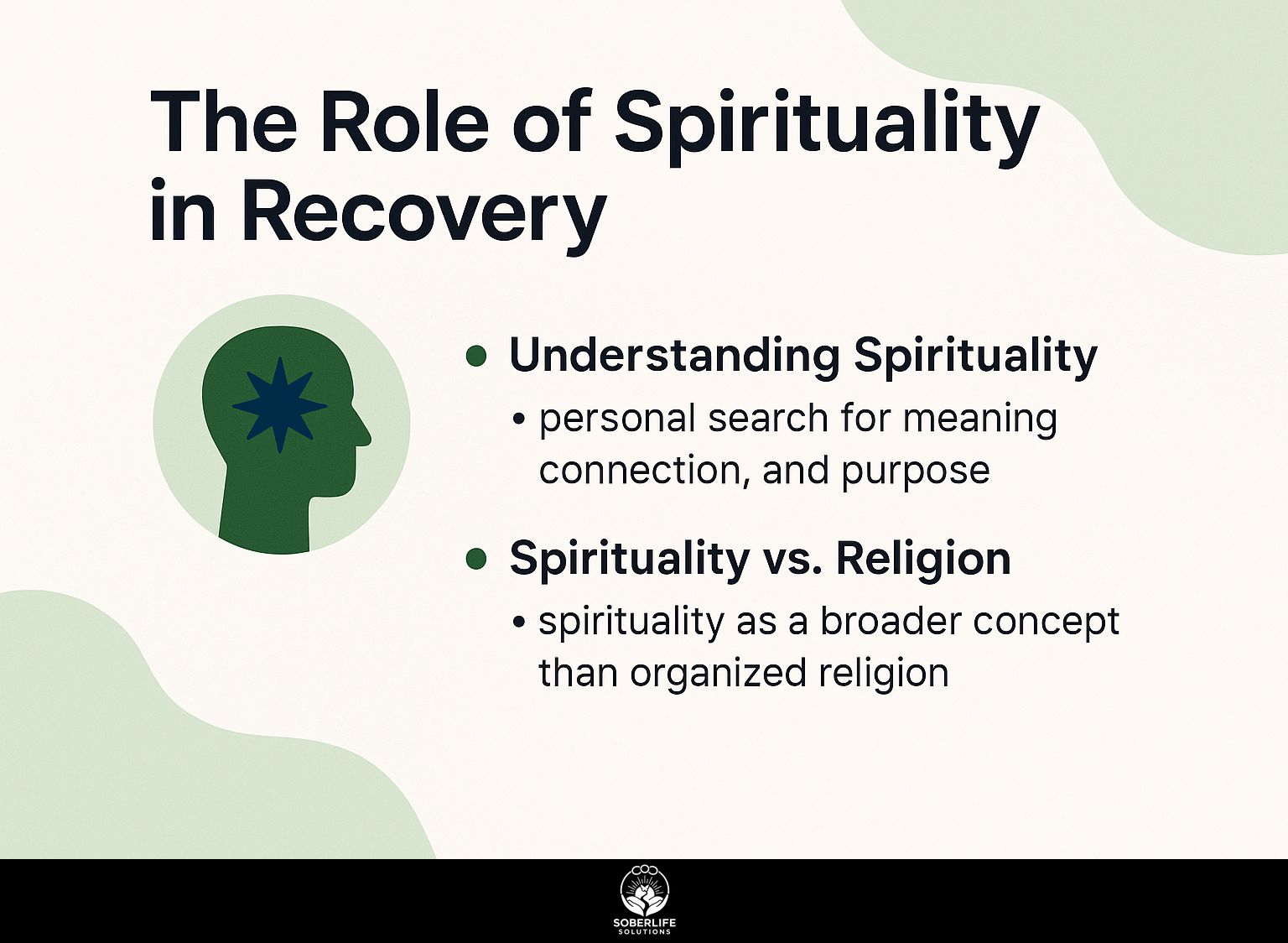
Including spirituality in therapy can improve recovery by helping people connect with themselves and others, which is important for mental health. This approach is particularly impactful in alcohol addiction recovery, as spiritual fulfillment can enhance personal growth and resilience. One of our hidden gems reveals how integrating spirituality into recovery processes can lead to profound transformations.
Understanding Spirituality
Spirituality includes various beliefs and actions that help people feel connected and find meaning beyond themselves.
Unlike religion, which typically involves organized beliefs and practices centered around a deity or community, spirituality is more individualized. This distinction is explored in depth by Wyeth Austin on Medium, who analyzes how personal and communal aspects differ between the two.
For example, someone might engage in mindfulness meditation, which promotes inner peace and awareness, while another might find fulfillment through nature walks, tapping into a sense of wonder and connection with the universe.
Tools like guided meditations (available on apps like Headspace or Calm) or journaling can support spiritual growth and self-improvement, helping people think about their experiences and beliefs freely, without being limited by established religious systems.
Spirituality vs. Religion
Spirituality is about personal development and finding oneself, while religion usually includes organized beliefs and group activities, which can help or sometimes interfere with recovery.
In therapy, spirituality can help find purpose through practices like mindfulness and meditation, improving emotional control and strength.
For example, using guided meditations can help clients focus on their inner thoughts, while gratitude journals increase awareness of good things in life.
Conversely, rigid religious structures might exacerbate feelings of guilt or shame, potentially hampering progress. Therapists must understand these relationships, developing a specific plan that includes spiritual growth, while being aware of the possible issues with structured religions.
Key Principles of Transpersonal Therapy
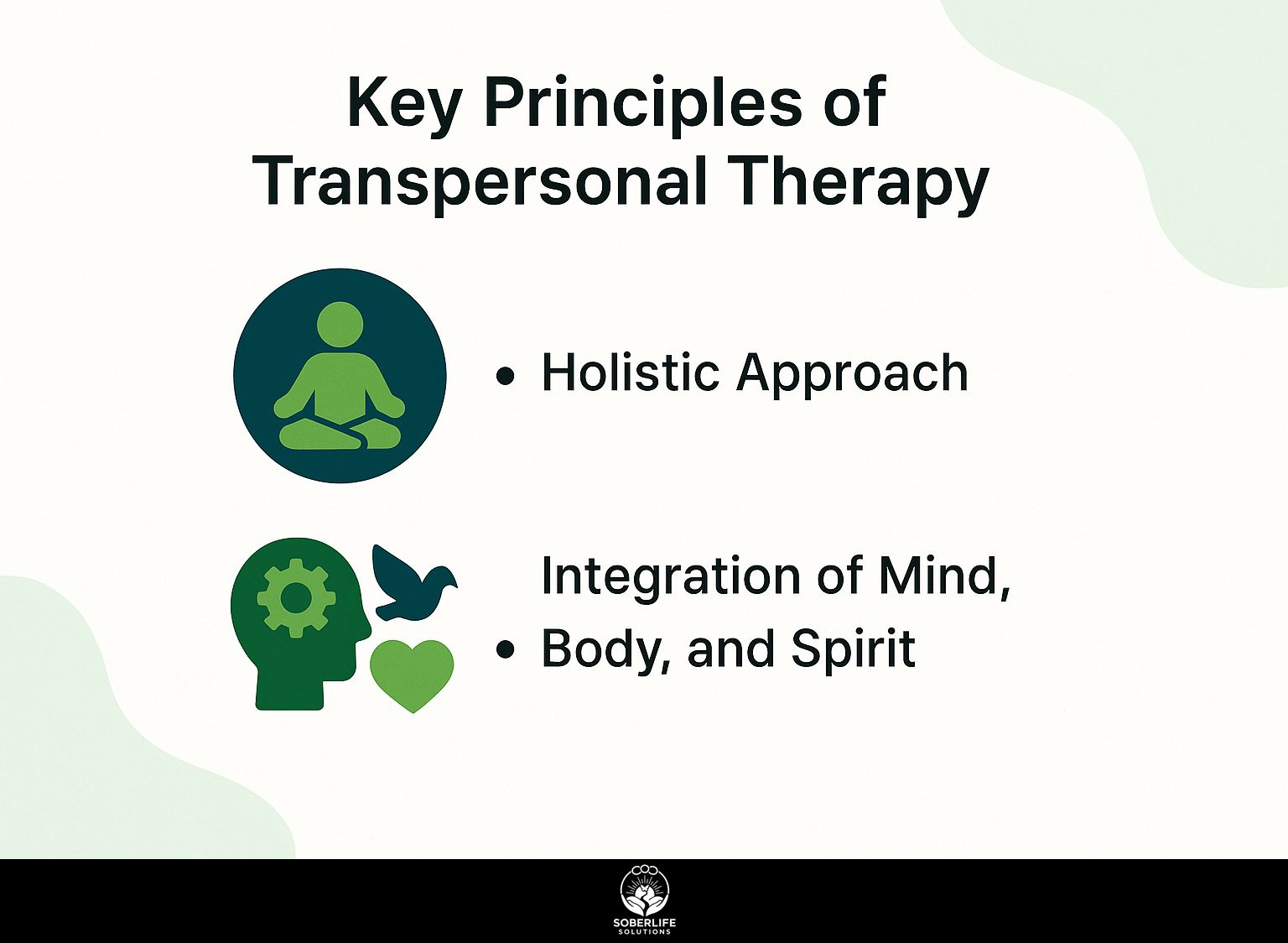
Transpersonal therapy is based on a complete method that connects the mind, body, and spirit for thorough healing.
Holistic Approach
Looking at the person as a complete unit involves caring for their emotional, physical, and spiritual needs to support healing from trauma.
In practice, therapists might use mindfulness meditation to improve emotional awareness, apply physical movement therapies like yoga to help release trauma stored in the body, and use spiritual practices such as visualization to build resilience. According to research findings from Healthline, meditation offers numerous science-based benefits that can significantly contribute to emotional and physical healing.
For instance, clients might participate in guided imagery sessions that help them reframe traumatic experiences, allowing for deeper healing. Using these methods alongside cognitive-behavioral techniques can cause significant changes by dealing with symptoms and finding underlying causes, leading to a lasting recovery path.
Integration of Mind, Body, and Spirit
Combining mental, physical, and spiritual aspects helps you learn more about yourself, encourages thinking skills, and supports spiritual growth.
In transpersonal therapy, methods like breathwork and mindfulness are important in bringing this integration together.
Breathwork helps people notice physical feelings and emotions, often bringing deep realizations during therapy sessions. For instance, simple practices like diaphragmatic breathing can help release tension and ground individuals.
Mindfulness, on the other hand, encourages present-moment awareness, enabling clients to observe their thoughts without judgment.
Using these methods often can change therapy sessions, guiding people toward full healing and self-awareness.
Therapeutic Techniques in Transpersonal Therapy
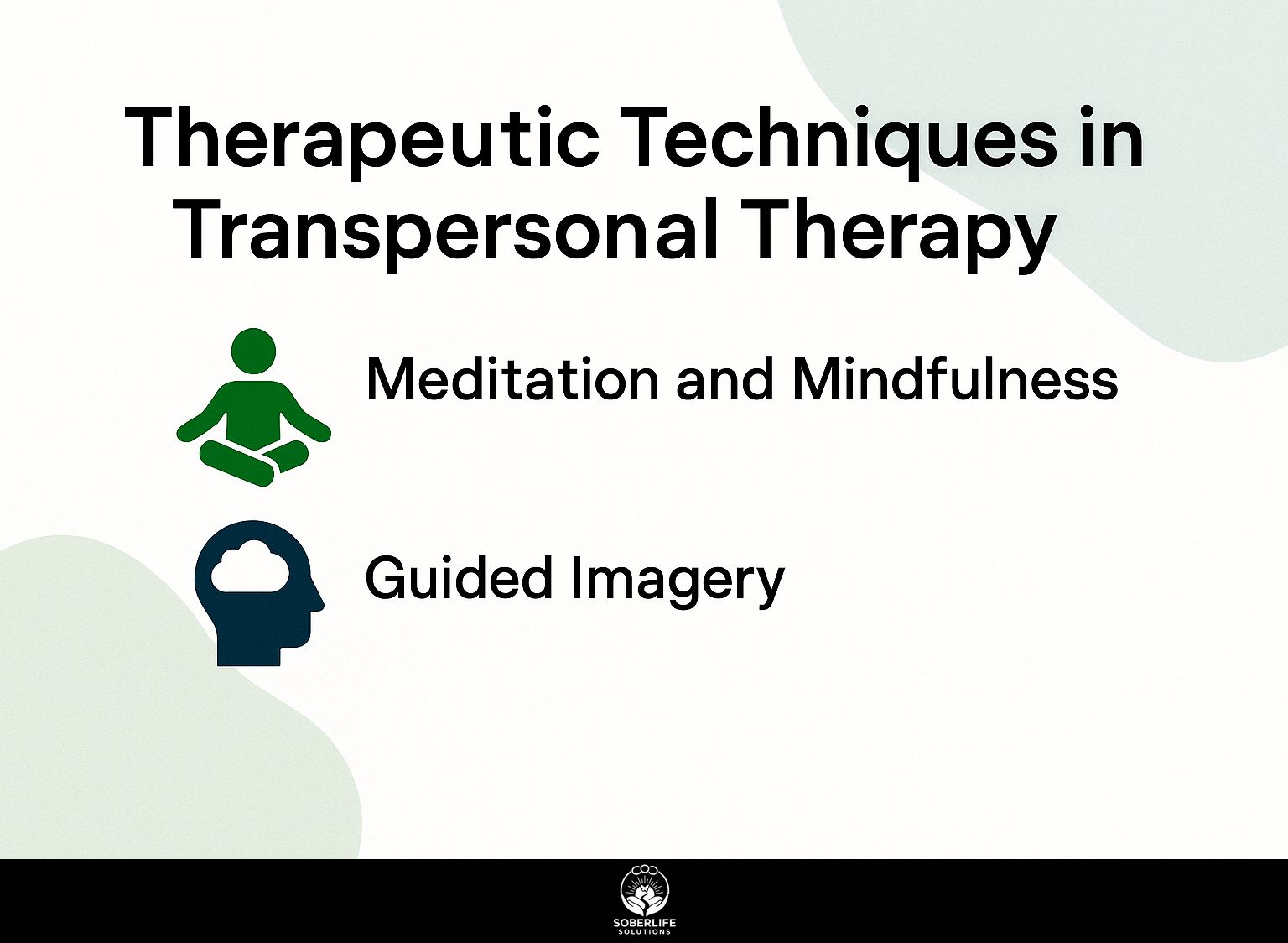
Transpersonal therapy uses different therapeutic methods to increase self-awareness and help with emotional healing.
Meditation and Mindfulness
Meditation and mindfulness practices serve as foundational techniques in transpersonal therapy, promoting emotional resilience and spiritual awareness.
To start using these practices successfully, try guided meditations with apps like Headspace or Calm, which have programs designed for those new to meditation.
Consider setting aside just 10 minutes daily for mindfulness breathing exercises; research from JAMA Internal Medicine highlights their potential to reduce anxiety and depression.
Another impactful technique is body scanning, which involves mentally checking in with different body parts, enhancing bodily awareness and relaxation. Regular practice can lead to significant improvements in stress management and overall mental health.
Guided Imagery
Guided imagery is a powerful technique that facilitates emotional healing by helping clients visualize and process their experiences.
To effectively implement guided imagery in therapy, begin by creating a calming environment. Therapists can encourage clients to close their eyes and take deep breaths.
Next, help them create clear images in their mind, like thinking of a calm scene or remembering a happy moment.
Tools like recordings of calming guided imagery scripts or apps like Calm can improve the experience. Research shows that this approach can significantly reduce anxiety and improve emotional well-being, making it a key element of transpersonal therapy methods.
Benefits of Transpersonal Therapy in Recovery
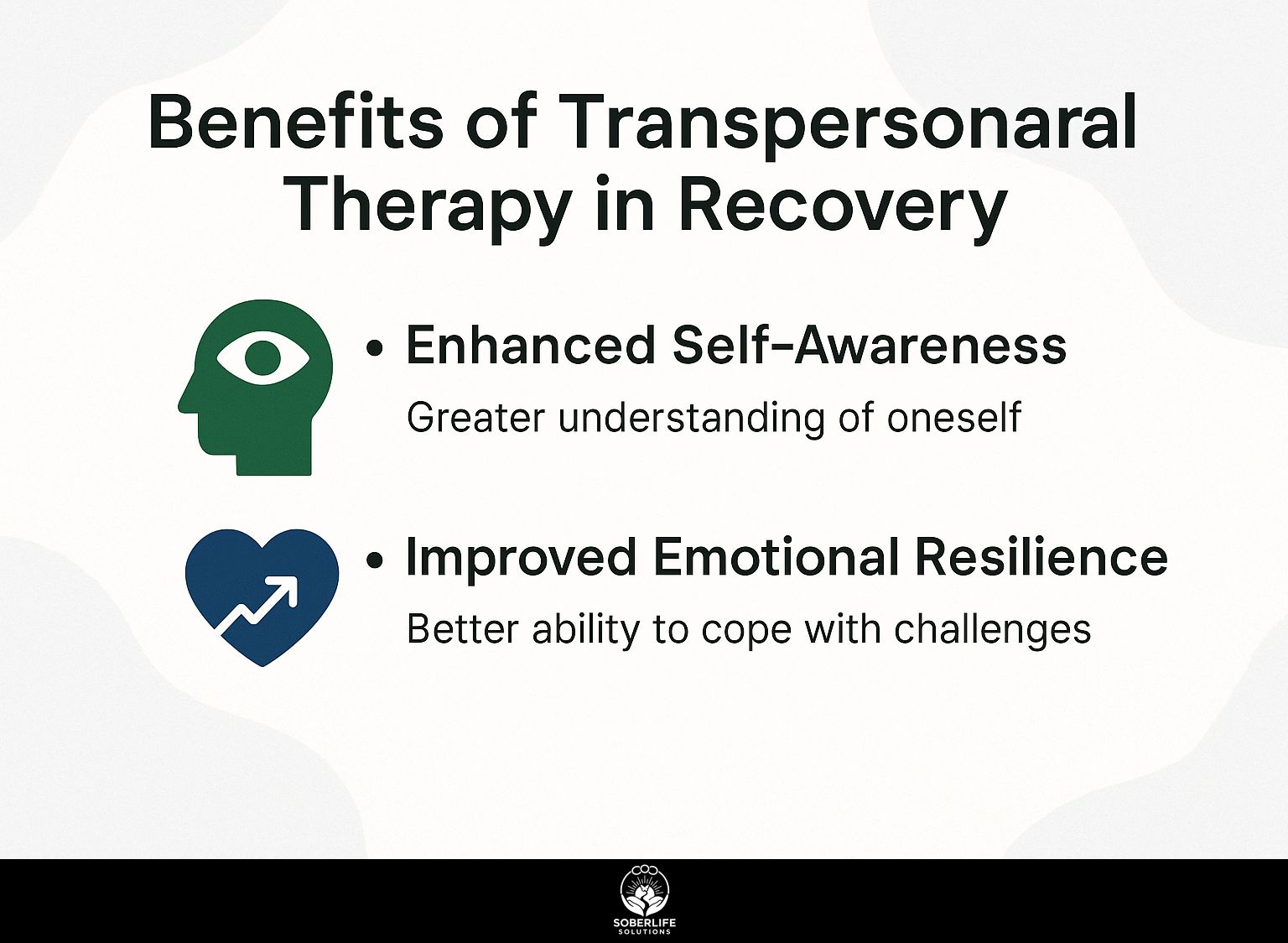
Transpersonal therapy provides many benefits, like better self-awareness and stronger emotional resilience, which are important for lasting recovery.
Enhanced Self-Awareness
Improving self-awareness through transpersonal therapy can lead to significant personal growth and change.
In transpersonal therapy, clients often engage in mindfulness exercises, guided imagery, or deep relaxation techniques.
For example, a client might use visualization to understand their own values and emotions better.
Journaling is another powerful tool; by reflecting on their experiences, clients can identify recurring themes in their thoughts and behaviors.
A lot of people notice that meditating daily makes them more self-aware and less anxious, leading to a more satisfying life.
These methods help people learn more and recover emotionally.
Improved Emotional Resilience
By building stronger spiritual connections, transpersonal therapy improves emotional strength, helping individuals handle life’s difficulties more effectively.
This therapeutic approach integrates techniques such as mindfulness meditation and guided imagery.
For instance, a case study demonstrated that a client struggling with anxiety learned to visualize a peaceful sanctuary during sessions, significantly reducing panic attacks.
Another participant used journaling to examine spiritual experiences, which helped them understand themselves better and manage challenges effectively.
These methods increase self-awareness and help people handle stress better.
With ongoing practice, clients often report an increased capacity to manage adversity and maintain emotional balance in their daily lives.
Challenges and Considerations
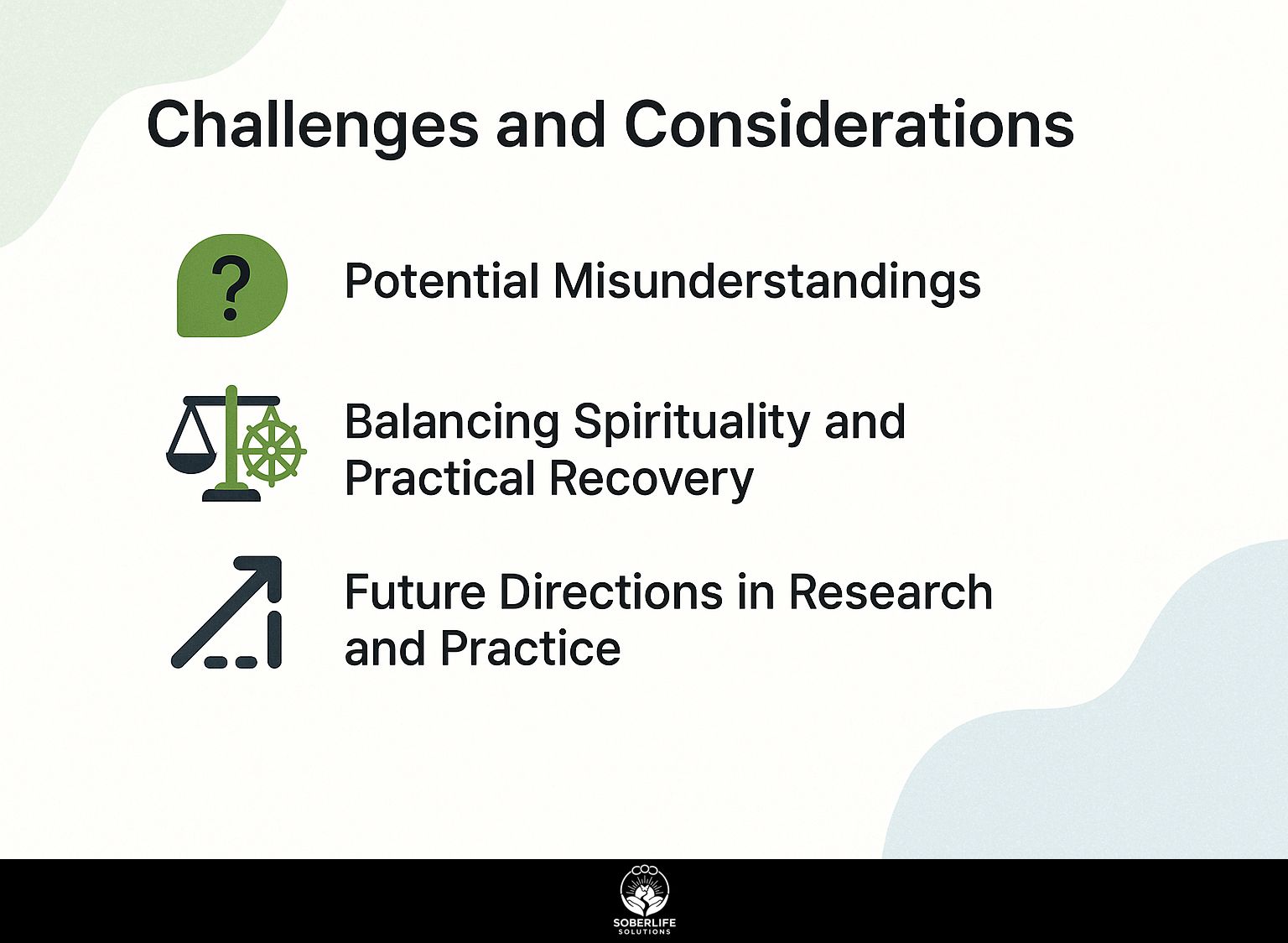
Transpersonal therapy can be very helpful, but some problems and confusion can make it less effective.
Potential Misunderstandings
Confusion about transpersonal therapy can cause doubt about its effectiveness and importance in mental health treatment.
Many believe transpersonal therapy focuses solely on spiritual experiences, overlooking its practical applications. It blends standard treatments with mindfulness and approaches that involve the entire body, making it appropriate for various psychological problems.
Clients often use techniques like guided imagery, journaling, and breathwork to better understand themselves.
Organizations such as the Association for Transpersonal Psychology support approaches based on evidence. They stress that the therapy’s aim is to encourage personal development by helping individuals learn more about themselves and connect to wider human experiences.
Balancing Spirituality and Practical Recovery
Finding the right balance between spirituality and practical recovery techniques is essential for effective therapeutic outcomes.
Using spiritual activities such as mindfulness meditation together with practical recovery techniques can lead to very effective outcomes in therapy.
For example, therapists might use guided imagery along with cognitive behavioral therapy (CBT) to help clients visualize their goals as they address negative thought patterns.
Utilizing tools such as meditation apps like Headspace can support daily spiritual practice, while journaling helps track progress in both spirituality and recovery.
Using these methods, clients often notice that they become emotionally stronger, leading to long-term recovery.
Upcoming Trends in Research and Practice
New studies on transpersonal therapy show its important role in improving spiritual growth and mental well-being.
Recent studies recommend including mindfulness techniques in transpersonal therapy because they improve self-awareness and help manage emotions. For instance, incorporating practices like guided meditation or yoga can deepen clients’ experiences.
The role of nature exposure in facilitating spiritual growth is gaining attention; programs that include outdoor therapy sessions are showing promising results. Practitioners may also consider using psychometric assessments to gauge spiritual well-being, thus tailoring interventions more effectively.
These areas present exciting opportunities for enhancing both research and practical applications in the field.
Frequently Asked Questions
What is transpersonal therapy in recovery?
Transpersonal therapy in recovery is a type of therapy that focuses on the spiritual aspects of a person’s life and how it can aid in their recovery process. It recognizes that spirituality plays an important role in overall well-being and can be a powerful tool in overcoming addiction.
How does transpersonal therapy differ from traditional therapy?
Transpersonal therapy differs from traditional therapy in that it places a greater emphasis on spiritual growth and connection as a means of healing. It examines the broader world, including practices like mindfulness, meditation, and being aware of oneself.
Can transpersonal therapy be used in all stages of recovery?
Yes, transpersonal therapy can be effective in all stages of recovery. In the beginning, it can help people learn more about themselves and why they use substances. In later stages, it can help with staying sober and discovering purpose and meaning in life after recovery.
What role does spirituality play in transpersonal therapy?
Spirituality plays a central role in transpersonal therapy, as it is seen as an integral aspect of human existence. It is recognized as a source of strength, guidance, and connection, and can aid in the healing process by providing a sense of purpose and meaning in life.
Is transpersonal therapy in recovery right for all individuals?
Transpersonal therapy might not be right for everyone, since some people might not want to include spirituality in their healing process. It is important for individuals to find a therapy approach that aligns with their personal beliefs and needs.
Are there specific techniques used in transpersonal therapy in recovery?
Yes, there are a variety of techniques used in transpersonal therapy, such as meditation, mindfulness, journaling, and rituals. These methods help people connect with their spiritual side and understand their own thoughts and feelings better.

